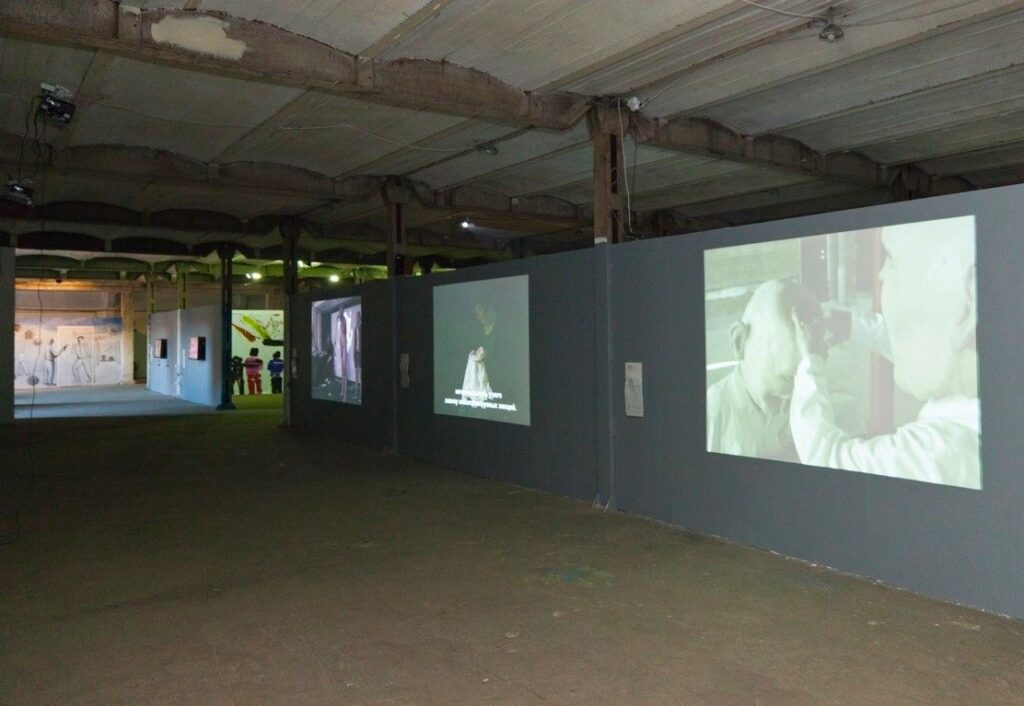
🗓️April 26 – June 7, 2012
🎟 Free entry on opening night.
On other exhibition days: 100 RUB admission.
All visitors will receive the first issue of The Art Newspaper and the latest edition of ARTGUIDE magazine as a gift.
Happiness is a Warm Gun
Artists:
Adamski/Brzozan, Dorota Buczkowska, Bogna Burska, Agata Groszek, Małgorzata Gurowska, Ola Czerniakowska, Kobas Laksa, Jacek Malinowski, Jacek Markiewicz, Tomasz Mróz, Anna Orlikowska, Aleksandra Polisewicz, Tomas Rafa, Konrad Smoleński, Daneel Suchocki, Wojciech Zasadni, Krzysztof Żwirblis
Anton Akimov, Svetlana Baskova, Vverkh!, Alina Gutkina, Elikuka, Olga Zhitlina, Irina Korina, Kuda Begut Sobaki, Elena Kovylina, Taus Makhacheva, MishMash, Liza Morozova, Georgy Ostretsov, Sergey Pakhomov, David Ter-Oganyan
Happiness is a Warm Gun
The title of The Beatles song from the White Album comes from a phrase found in a gun magazine, which made a strong impression on John Lennon. Initially, he called it Happiness is a warm gun in your head.
Today, a significant number of Russian exhibition projects address themes of protest. At the same time, there is a parallel trend of the banalization of engaged art, where protest is perceived as a product that can have its “five minutes” on the market. Many works merely imitate a protest-based approach rather than genuinely embodying it. The rebellious stance taken within the glossy mentality of some contemporary artists appears rather one-dimensional, despite the familiar irony and self-irony that have accompanied contemporary art for many years.
Happiness/Warm Gun is an exploration centered on human motivation, the fundamental structures of society, and the mindset of the average person. Motivations drive all human activity, which in turn leads to personal and social goals.
One of the exhibition’s objectives was to identify and present truly critical art as a direct expression of a fundamental approach, as well as insider art that directly engages with these issues. It is quite possible that these represent an alternative to the existing form of para-activist art, which is likely undergoing a process of academicization at this moment.
The exhibition addresses issues of power and domination, ranging from interpersonal relationships to broader societal structures. However, our primary focus was on the origins of class divisions as a phenomenon. For this reason, we turned to the human subconscious, to fears, existential anxiety, and the search for what we call a state of happiness.
All forms of anxiety are filtered through cultural and mass media products. Whether it be military conflicts presented to us as media spectacles or demonstrations of “sympathy,” all these elements primarily serve to reaffirm and justify our comfortable positions as spectators. They act as a form of self-compensation, a hidden allegiance to the system.
The psychosocial mechanisms of suppression and control are often hidden—they are usually absorbed at a subconscious level and form the foundation of our everyday behavior. While we could analyze many works that explore social structures, it was far more important for us to examine this issue within the context of artistic practice—so that theory does not dominate over the direct observation of human nature.
Curator: Katya Shadkovska
Supported by: Konstantin Boroshnev
Special thanks to: Katarzyna Sloboda, Olga Makushkina, Olga Donets
Poster design: Małgorzata Gurowska